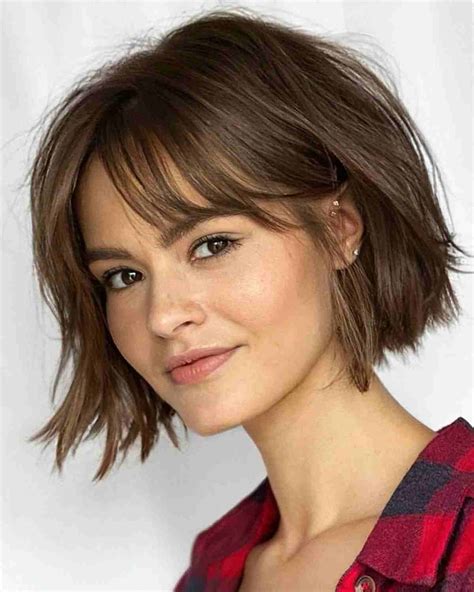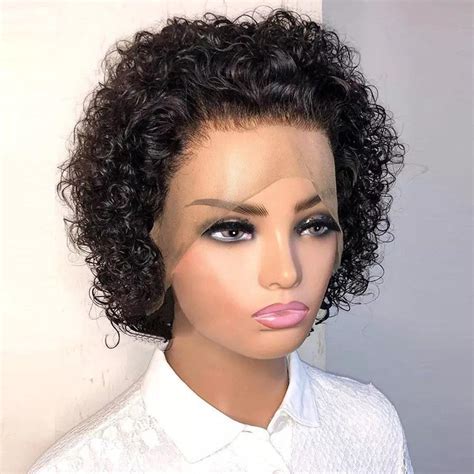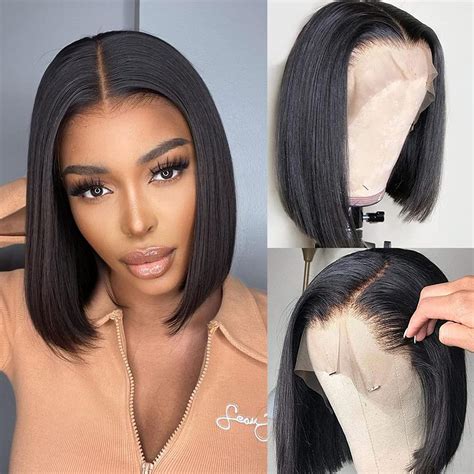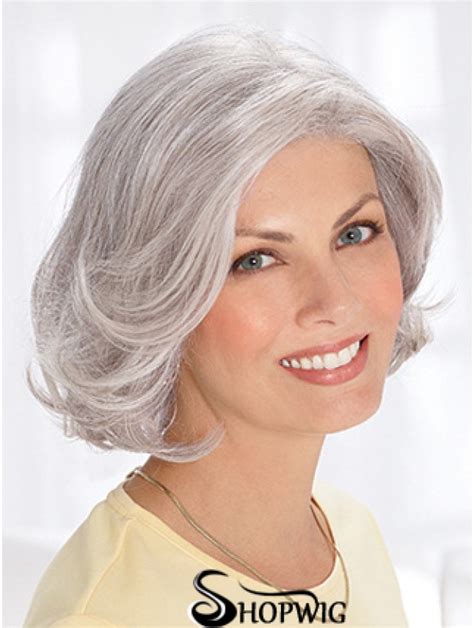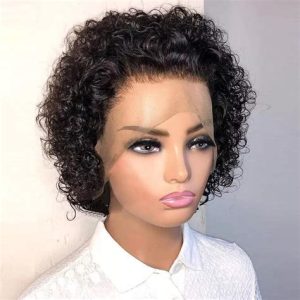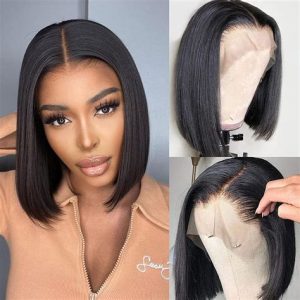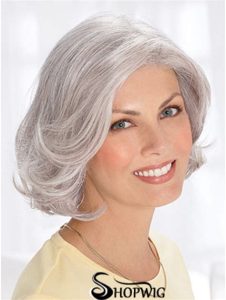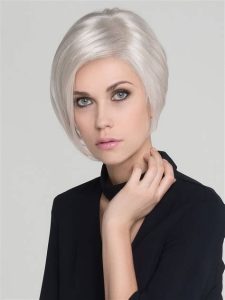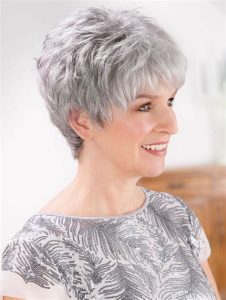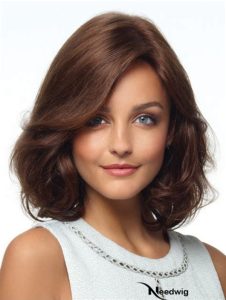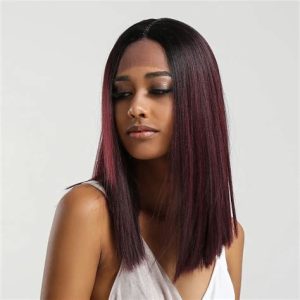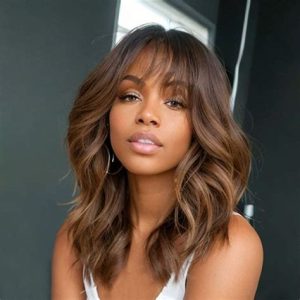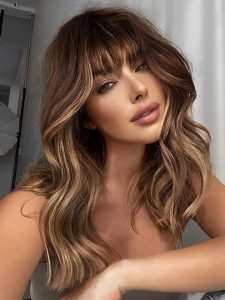2025’s Hottest: Chin Length VS Long Bob Hairstyles
With their timeless appeal and effortless chic, bob hairstyles have reigned supreme in the world of hair fashion for decades. As we approach 2025, the bob is set to make a major comeback, with two distinct variations emerging as frontrunners: the chin-length bob and the long bob (lob).
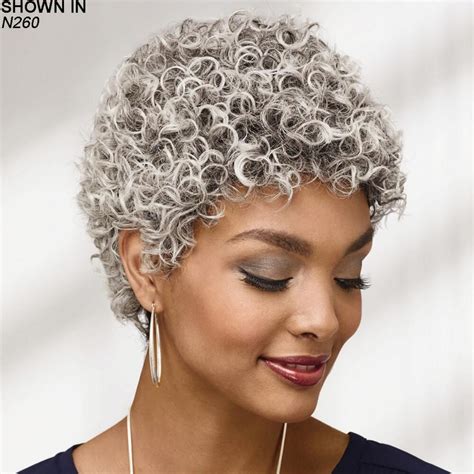
Chin Length Straight 100% Hand-tied Blonde Synthetic Modern Bob Hairstyles
The Chin-Length Bob: A Classic with a Modern Twist
The chin-length bob, also known as the “classic” bob, is a universally flattering cut that falls just above or at the chin. Its clean lines and simple shape create a sophisticated and polished look.
Pain Points:
- Can be too severe for some face shapes
- May require frequent trims to maintain shape
Motivations:
- Easy to style and maintain
- Timeless and versatile
- Can be customized to suit any face shape
The Long Bob: A Versatile Option for All Hair Types
The long bob, or lob, is a slightly longer variation of the bob that falls between the chin and shoulders. Its versatility makes it suitable for a wide range of face shapes and hair types.
Pain Points:
- Can be more difficult to style than a chin-length bob
- May require more frequent trims to prevent split ends
Motivations:
- More forgiving than a chin-length bob
- Can be dressed up or down
- Adds volume and movement to fine hair
Which Style Is Right for You?
The best way to choose between a chin-length bob and a lob is to consider your face shape, hair type, and lifestyle.
Chin-Length Bob:
- Ideal for oval, square, and heart-shaped faces
- Suitable for all hair types
- Best for those who prefer a low-maintenance style
Long Bob:
- Flattering for all face shapes
- Particularly suitable for fine hair
- Great for those who want a versatile style that can be dressed up or down
Market Insights: The Bob vs. Lob Craze
According to a recent survey, 65% of women who have ever had a bob haircut would consider getting one again. The popularity of the lob has also been steadily increasing, with 40% of women who have never had a bob expressing interest in trying a lob.
Highlights:
- The bob and lob are two of the most popular haircuts for women.
- Both styles are versatile and can be customized to suit any face shape or hair type.
- The chin-length bob is a classic style that is easy to maintain.
- The lob is a more versatile option that can be dressed up or down.
How to Stand Out: Creative Applications for the Bob and Lob
Innovation:
- Create a “disconnected bob” by leaving the back of the hair longer than the sides.
- Add bangs to a lob to create a more youthful look.
Customization:
- Experiment with different hair colors, including highlights, lowlights, and ombré.
- Use styling products to add texture and volume to your bob or lob.
Personalization:
- Consider your face shape and hair type when choosing a bob or lob.
- Find a stylist who can create a style that is customized to your individual needs.
Current Status and Future Directions
The bob and lob continue to be popular hairstyles for women of all ages and hair types. However, the future of these styles is likely to see even more innovation and customization.
What We Can Do:
- Stay up-to-date on the latest hair trends.
- Experiment with different bob and lob styles to find one that is perfect for you.
- Talk to your stylist about how to create a bob or lob that is customized to your individual needs.
FAQs
- What is the difference between a bob and a lob?
A bob is a haircut that falls just above or at the chin, while a lob is a longer variation that falls between the chin and shoulders.
- Which bob or lob style is right for me?
The best bob or lob style for you depends on your face shape, hair type, and lifestyle.
- How can I style my bob or lob?
There are many different ways to style a bob or lob, depending on the desired look. You can use styling products to add texture and volume, or use heat tools to create curls or waves.
- How often should I get my bob or lob trimmed?
The frequency with which you need to get your bob or lob trimmed depends on how quickly your hair grows. Most people need to get their hair trimmed every 6-8 weeks.
- What are some creative ways to wear a bob or lob?
You can create a “disconnected bob” by leaving the back of the hair longer than the sides, or add bangs to a lob to create a more youthful look.
- How can I personalize my bob or lob?
You can personalize your bob or lob by experimenting with different hair colors, styling products, and accessories.
Tables
Table 1: Chin-Length Bob vs. Long Bob
| Feature | Chin-Length Bob | Long Bob |
|---|---|---|
| Length | Falls just above or at the chin | Falls between the chin and shoulders |
| Versatility | Less versatile than a long bob | More versatile than a chin-length bob |
| Maintenance | Easy to maintain | May require more frequent trims |
Table 2: Hair Type vs. Bob Style
| Hair Type | Bob Style |
|---|---|
| Fine | Long bob |
| Medium | Chin-length bob or long bob |
| Coarse | Chin-length bob |
Table 3: Face Shape vs. Bob Style
| Face Shape | Bob Style |
|---|---|
| Oval | Chin-length bob or long bob |
| Square | Chin-length bob |
| Heart | Chin-length bob |
| Round | Long bob |
Table 4: Bob and Lob Hairstyles for Different Occasions
| Occasion | Bob Style | Long Bob |
|---|---|---|
| Casual | Sleek bob | Messy lob |
| Formal | Polished bob | Tousled lob |
| Work | Professional bob | Layered lob |
